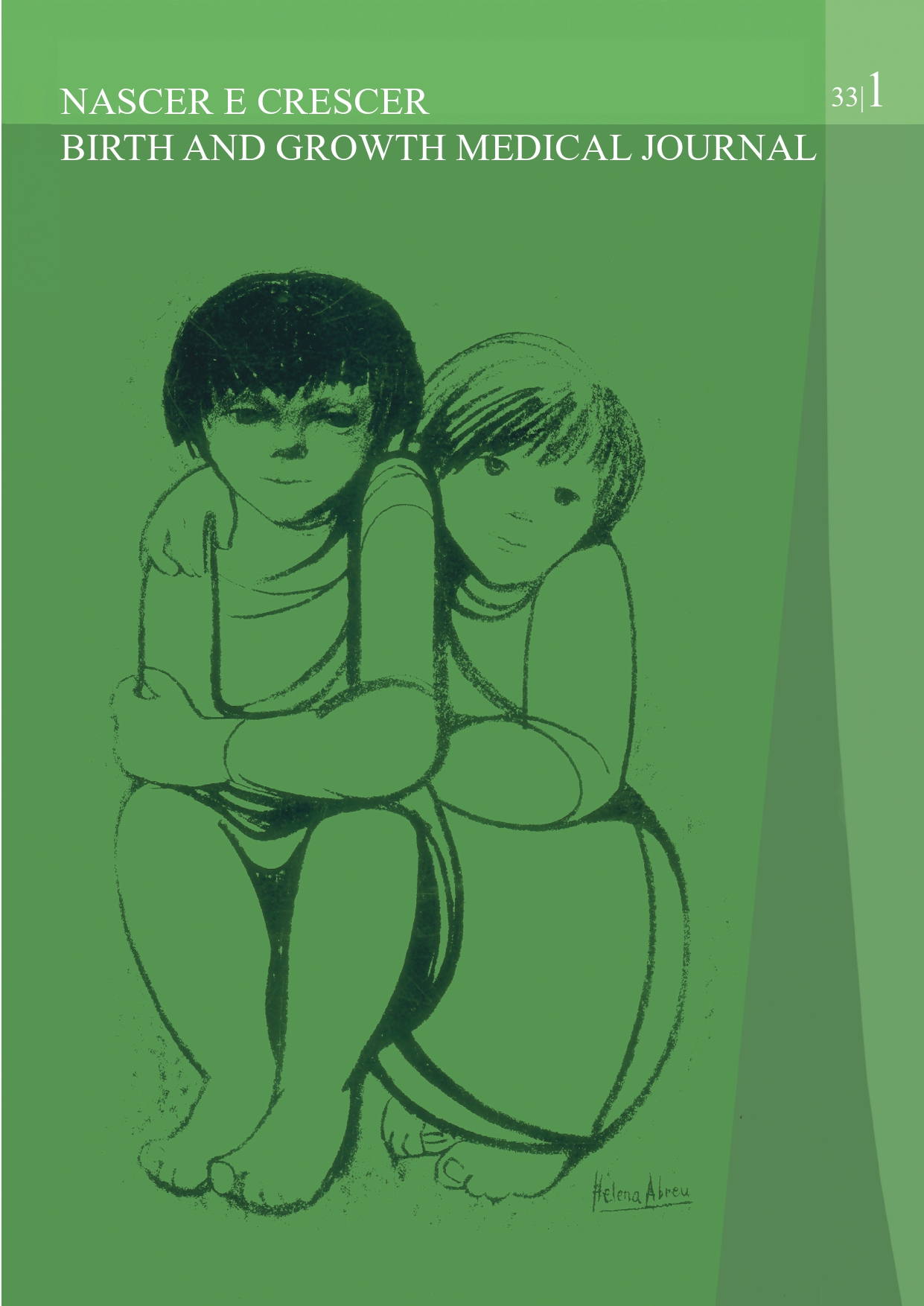Successful off-label use of omalizumab in a child with chronic spontaneous urticaria
DOI:
https://doi.org/10.25753/BirthGrowthMJ.v33.i1.28163Keywords:
chronic spontaneous urticaria, omalizumab, Pediatrics, urticariaAbstract
Omalizumab is approved as third-line therapy for patients older than 12 years with antihistamine-refractory chronic spontaneous urticaria.
The authors present the case of an eight-year-old boy with a history of migratory maculopapular skin lesions, arthralgias, and conjunctival hyperemia. Laboratory findings were unremarkable. Skin biopsy was consistent with urticaria. Treatment with oral betamethasone and quadruple dose of bilastine was initiated, with clinical resolution of arthralgias and conjunctival hyperemia, but no improvement in skin lesions. After five months of illness, the patient developed several side effects of corticosteroids and was started on cyclosporine, with no clinical response after four weeks of treatment. At this point, he was started on off-label omalizumab 300 mg every four weeks, and corticosteroid therapy was discontinued after one month of treatment. After the third administration of omalizumab, the boy achieved complete clinical resolution.
Omalizumab may be an effective and safe treatment for antihistamine-refractory chronic spontaneous urticaria in pediatric age.
Downloads
References
Chang J, Cattelan L, Ben-Shoshan M, Le M, Netchiporouk E. Management of Pediatric Chronic Spontaneous Urticaria: A Review of Current Evidence and Guidelines. J Asthma Allergy. 2021;14:187-99.
Fricke J, Ávila G, Keller T, Weller K, Lau S, Maurer M, et al. Prevalence of chronic urticaria in children and adults across the globe: Systematic review with meta-analysis. Allergy. 2020;75(2):423-32.
Caffarelli C, Paravati F, El Hachem M, Duse M, Bergamini M, Simeone G, et al. Management of chronic urticaria in children: a clinical guideline. Ital J Pediatr. 2019;45(1):101.
Zuberbier T, Aberer W, Asero R, Abdul Latiff AH, Baker D, Ballmer-Weber B, et al. The EAACI/GA²LEN/EDF/WAO guideline for the definition, classification, diagnosis and management of urticaria. Allergy. 2018;73(7):1393-414.
Licari A, Marseglia A, Caimmi S, Castagnoli R, Foiadelli T, Barberi S, et al. Omalizumab in children. Paediatr Drugs. 2014;16(6):491-502.
Costa C, Gonçalo M. Abordagem diagnóstica e terapêutica da urticária crónica espontânea: recomendações em Portugal. Acta Med Port. 2016; 29:763-81.
Choi SH, Baek HS. Approaches to the diagnosis and management of chronic urticaria in children. Korean J Pediatr. 2015;58(5):159-64.
Rezzani R. Cyclosporine A and adverse effects on organs: histochemical studies. Prog Histochem Cytochem. 2004;39(2):85-128.
Corren J, Kavati A, Ortiz B, Colby JA, Ruiz K, Maiese BA, et al. Efficacy and safety of omalizumab in children and adolescents with moderate-to-severe asthma: A systematic literature review. Allergy Asthma Proc. 2017;38(4):250-63.
Al-Shaikhly T, Rosenthal JA, Ayars AG, Petroni DH. Omalizumab for chronic urticaria in children younger than 12 years. Ann Allergy Asthma Immunol. 2019;123(2):208-10.e2.
Passanisi S, Arasi S, Caminiti L, Crisafulli G, Salzano G, Pajno GB. Omalizumab in children and adolescents with chronic spontaneous urticaria: Case series and review of the literature. Dermatol Ther. 2020;33(4):e13489.
Corral-Magaña O, Gil-Sánchez JA, Bover-Bauzá C, Martinez-Cepas P, Montis-Palos MC, Martín-Santiago A. Chronic urticaria in children under 15 years of age: Clinical experience beyond the clinical trials. Pediatr Dermatol. 2021;38(2):385-9.
European Medicines Agency. Resumo das características do medicamento – Xolair [accessed 2022 Aug 2]. Available from: https://www.ema.europa.eu/en/documents/product-information/xolair-epar-product-information_pt.pdf.
Downloads
Published
How to Cite
Issue
Section
License
Copyright (c) 2024 Tânia Gonçalves, Iolanda Alen Coutinho, Joana Sofia Pita, Paula Leiria Pinto

This work is licensed under a Creative Commons Attribution-NonCommercial 4.0 International License.
Copyright and Authors' Rights
All articles published in Nascer e Crescer - Birth and Growth Medical Journal are Open Access and comply with the requirements of funding agencies or academic institutions. For use by third parties, Nascer e Crescer - Birth and Growth Medical Journal adheres to the terms of the Creative Commons License "Attribution - Non-Commercial Use (CC-BY-NC)".
It is the author's responsibility to obtain permission to reproduce figures, tables, etc. from other publications.
Authors must submit a Conflict of Interest statement and an Authorship Form with the submission of the article. An e-mail will be sent to the corresponding author confirming receipt of the manuscript.
Authors are permitted to make their articles available in repositories at their home institutions, provided that they always indicate where the articles were published and adhere to the terms of the Creative Commons license.


